|
|
|

Acanthocalicium (Lobivia) thionanthum P144 Punta de Ballasto 2100m
The specific name "thionanthum" means "sulphur yellow flowers"
and it was originally applied the yellow flowering form of this
very variable taxon, but now - with the the
name "A. thionantum" - the botanist identify a very variable, poliformic
complex of plant (previously classified as separate, species, variety
and forms) with variable colour of flowers and spines sizes.
|
Description: Usually solitary or slowly
branching through basal shoots, but quite variable taxon with several
forms.
There are a number of varieties of this highly variable cactus species,
but not all are universally recognized.
Stem: Spherical, over time it becomes slightly cylindrical,
growing to a height of 12 cm or more, and a diameter of 6 to 10 cm. The
epidermis is green to dark blue grey, and become a clear powdery-grey in
the older part of the stem (like some Copiapoa)
Ribs: About 9-15.
Areoles: At the apex of tubercles, at first are covered with
yellowish-brown felt. The flower part of the areola is elongated,
while the upper part curves around the sides of the rib, more or less in
the shape of a small shield. As the tubercles widen in the course of
growth, the areoles become elliptical and almost glabrous.
Spines: 5 to 10 radial spines and 1 to 4 central spines, they are
all more or less of the same length in a given plant (± 0,5 -3 cm.), but
this species appears to be very variable regarding the length colour and
number of spines in different populations.
They are usually black or light brown at
first, becoming grey or whitish-yellow as they age.
Flowers: Bell-shaped, 5 cm. long or less on lateral areoles, and
the segments of the perianth are sulphur or lemon-yellow (but also
white, pink, orange or red), They have very hairy buds, The floral tubes
have brown-white hairs /bristles and dark spine-tipped scales.
|
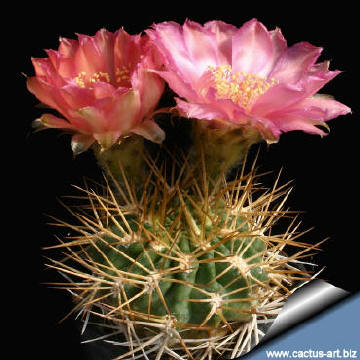 |
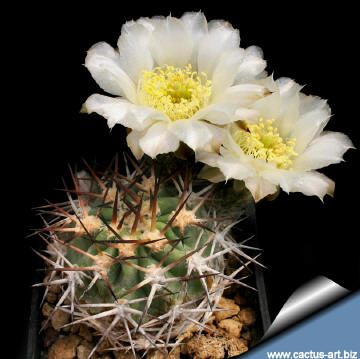 |
|
. |
|
 |

Flowers are not only yellow but ranges in colour from white to dark red.
The variability is due to the
genetic make up
of plants from different
populations
and among
individuals within a population. |
|
. |
|
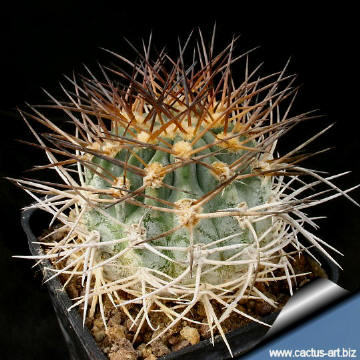 |
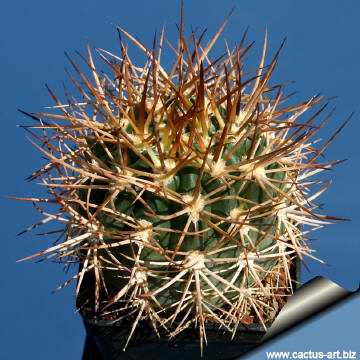 |
|
The epidermis is green to
dark blue grey, and become a
clear powdery-grey in the older part of the stem
(like some
Copiapoa)
Cultivation:
It is a summer-growing species that offers no cultivation difficulty.
Water regularly in summer (but do not over-water). It needs good
drainage and very porous soil. Keep rather dry in winter. Feed with a
high potassium fertilizer in summer. It is quite frost resistant if
kept dry (hardy to -12° C). It needs a very bright exposure. Full sun is
indispensable to keep plant compact with strong spines.
Propagation: Direct sow after last frost, offsets
(if available).
|
|
Advertising
|
|
|
|
|
Family:
Cactaceae (Cactus
Family)
Scientific name:
Acanthocalycium
thionanthum (Spegazzini) Backeberg
Origin: Argentina (Salta)
Habitat: Mountain
slopes
Conservation status: Listed in
CITES appendix 2.
Synonyms:
- Echinopsis thionantha (Speg.)
Werderm.
- Lobivia thionantha (Speg.)
Britton & Rose
- Echinocactus thionanthus,
- Acanthocalycium thionanthum v.
chionanthum (Speg.) Hoss.
- Acanthocalycium chionanthum
- Echinopsis chionantha
- Echinocactus chionanthus
- Acanthocalycium catamarcense [F.
Ritter]
- Acanthocalycium brevispinum
Ritt.
- Echinopsis brevispina
- Acanthocalycium minutum
- Acanthocalycium thionanthum vminutum
- Acanthocalycium griseum
Note: This sp. is in the genus Echinopsis
now, and its accepted name is Echinopsis
thionantha.
|
|

Flowers are not only yellow but ranges in colour from white to dark red.
This high variability is due to the
genetic make up
of plants from different
populations
and among
individuals within a population.
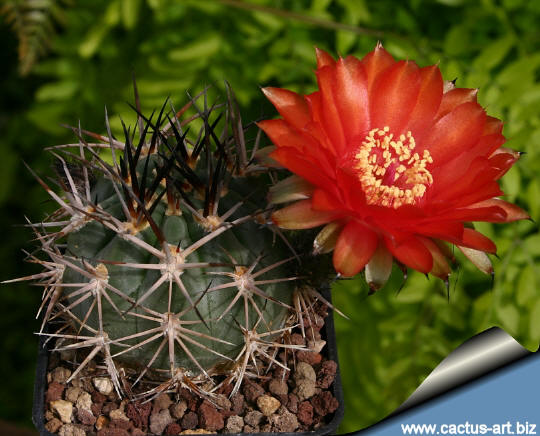
|
|
|
|
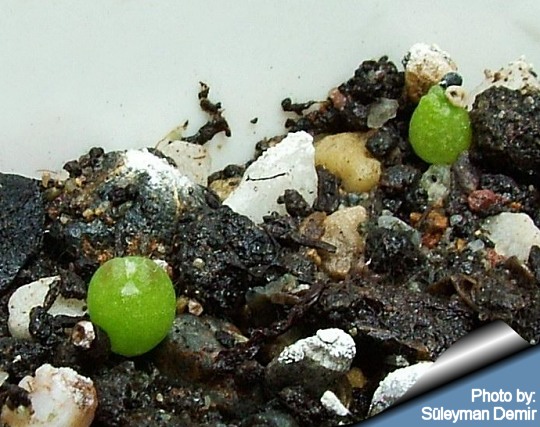
One week old seedlings
Photo &
©
copyright
by
Süleyman Demir Turkey
|
|
Photo of conspecific taxa, varieties,
forms and cultivars of
plants belonging to the Acanthocalycium
(Echinopsis) thionanthum/chionanthum
complex
(This
Taxon has lots of synonyms (like
many other cacti), with
several controversial varieties and subspecies,
and comprises a multitude of different forms, but where each form is
linked to others by populations of plants with intermediate
characteristics):

 |
|